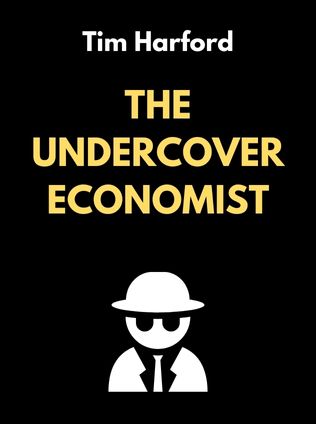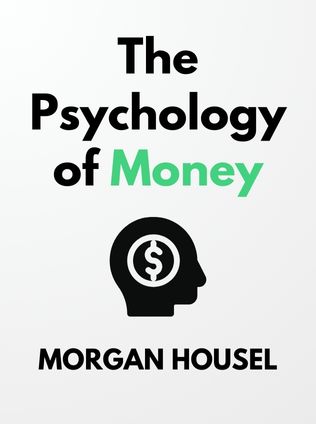
The Undercover Economist
Exposing Why the Rich Are Rich, the Poor Are Poor — and Why You Can Never Buy a Decent Used Car!
By Tim Harford
Published 01/2007
About the Author
Tim Harford is a renowned economist, writer, and broadcaster. He is best known for his ability to explain complex economic ideas in an engaging and accessible manner. Harford writes the long-running "Undercover Economist" column for the Financial Times, where he addresses a wide range of economic issues with wit and clarity. He is also the author of several books, including The Logic of Life and Adapt, and hosts the BBC podcast More or Less, which delves into the numbers and statistics behind the news. Harford's work aims to demystify economics and show how it affects our everyday lives.
Main Idea
The central premise of The Undercover Economist is to unveil the economic principles that underlie everyday events and major global issues. Tim Harford uses relatable examples, such as the pricing of a cup of coffee at Starbucks, to illustrate broader economic concepts like scarcity, market forces, and externalities. His goal is to equip readers with the tools to understand and analyze the economic forces at play in their daily lives and the wider world.
Table of Contents
- Introduction
- Who Pays for Your Coffee?
- What Supermarkets Don't Want You to Know
- Perfect Markets and the 'World of Truth'
- Crosstown Traffic
- The Inside Story
- Rational Insanity
- The Men Who Knew the Value of Nothing
- Why Poor Countries Are Poor
- Globalization
- How China Grew Rich
Who Pays for Your Coffee?
Harford begins his exploration of economics with the familiar experience of buying a cup of coffee. He reveals that the high price of a Starbucks cappuccino isn't just about the cost of coffee beans and milk. Instead, it's primarily about location. Starbucks can charge a premium because it chooses prime spots where hurried commuters are willing to pay more for convenience.
"The nice margin that Starbucks makes is due neither to the quality of the coffee nor to its smiling staff: it's location, location, location." - Tim Harford
This example introduces the concept of scarcity and how it creates bargaining power. When desirable resources (like prime coffee shop locations) are scarce, those who control them can demand higher prices. Harford uses the story of David Ricardo, a 19th-century economist, to further explain how scarcity impacts rents and prices in various markets.
Ricardo's insights into the dynamics of land rents during the Napoleonic wars are still relevant today. He observed that landlords with prime agricultural land could charge high rents because their land was more productive than less desirable land. This concept of "strength from scarcity" applies to modern markets as well.
- Coffee Prices: Starbucks charges more due to its prime locations near busy commuter routes.
- Land Rents: Landlords can demand high rents when desirable land is scarce, as seen in agricultural land during Ricardo's time.
What Supermarkets Don't Want You to Know
Harford exposes the sophisticated strategies supermarkets use to maximize profits. They employ various forms of price discrimination to charge different customers different prices based on their willingness to pay. One common method is through loyalty cards, which track purchasing habits and offer personalized discounts.
"Any well-run business will seek to charge each customer the maximum price he or she is willing to pay - and they do." - Tim Harford
Supermarkets use "first-degree price discrimination" to evaluate each customer individually and charge accordingly. This strategy aims to extract the highest possible price from each customer, maximizing the store's profits. Another common tactic is "group target" strategy, which offers different prices to distinct groups based on their perceived ability to pay. For example, seniors or students might receive discounts, while others pay full price.
- Loyalty Cards: Supermarkets offer personalized discounts based on past purchasing behavior.
- Internet Retailers: Companies like Amazon use cookies to track customers and adjust prices accordingly.
Harford also discusses the "self-incrimination" strategy, where companies persuade customers to reveal their price sensitivity by offering slightly different products. This allows businesses to identify and target less price-sensitive customers, further maximizing their profits. For instance, a supermarket might offer a premium version of a product at a higher price to attract customers willing to pay more for perceived quality.
Perfect Markets and the 'World of Truth'
In this section, Harford delves into the theory of perfect markets and their role in economic efficiency. He explains that in a perfectly competitive market, prices reflect all available information and resources are allocated optimally. In such markets, consumers make purchases only when the value of a product exceeds its price, ensuring that transactions benefit both buyers and sellers.
"In a free market, people don't buy things that are worth less to them than the asking price. The reason is simple: Nobody is forcing them to." - Tim Harford
Sign up for FREE and get access to 1,400+ books summaries.
You May Also Like
Rich Dad Poor Dad
What the Rich Teach Their Kids About Money - That the Poor and Middle Class Do Not!
By Robert T. KiyosakiFreakonomics
A Rogue Economist Explores the Hidden Side of Everything
By Steven D. Levitt and Stephen J. DubnerThe Lean Startup
How Today's Entrepreneurs Use Continuous Innovation to Create Radically Successful Businesses
By Eric RiesWho Moved My Cheese?
An Amazing Way to Deal with Change in Your Work and in Your Life
By Spencer Johnson, M.D.Factfulness
Ten Reasons We're Wrong About the World – and Why Things Are Better Than You Think
By Hans RoslingMake Your Bed
Little Things That Can Change Your Life...And Maybe the World
By William H. McRaven



















